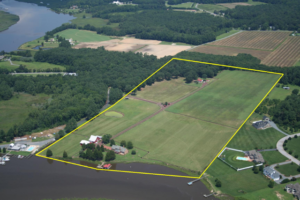Subdividing Land: How to Subdivide Your Property
At some point, you might decide to subdivide your property. This usually happens when an individual decides to divide it among family members as a part of their will, or when an individual wants to sell off a part of their property.
So, how do you go about subdividing land?
The first and most crucial step is to make sure that you are allowed to subdivide your land. For example, if your lot is located in an existing subdivision you may be limited to what you can do by the subdivision covenants and restrictions.
If you are in or near the city limits of a municipality then you may be restricted to what you can do by that cities subdivision regulation. Even if the city doesn’t regulate the subdivision of land, the county may. So, in my opinion, the first call should be to a land surveyor who will be familiar with the local subdivision regulations and what you can and can’t do.
If subdividing land is permitted, the next step will probably be to have the land surveyed. If you want to divide the land into several parcels of land, you’d have to work with a surveyor to do the measurements as well as stake out the individual lots.
The surveyor will be able to determine the lot size, whether you need to build a street for access, what easements will affect the lots, and other important matters. If the land is not accessible to a common sewer system then the surveyor will also need to conduct soil and percolation testing to determine if the land is suitable for an on-site sewage system.
Once you and your surveyor are done working out a plan of development showing the entire property subdivided into lots, it’s time to plat the property. Again, depending on the local regulations, this may involve meetings with the City or County officials or commissions and possibly the local health department.
After having that approval, the plat should then be filed in the county probate office to inform them that the property is being developed and will be changed from being taxed as acreage to individual lots in the future.
If you’re subdividing a property to sell, each lot should go through a closing process or at least some preparation of deeds for the intended future owners. The plat can be referenced for this process and the surveyor can help with any legal descriptions that are needed.
It is also possible that the new owner will want to know where the property lines are located in order to place a fence or any other improvements on the property. This step should ALWAYS be done before building on the property.
As you can see, when subdividing property, it’s very important that you choose a land surveyor who has experience with these kinds of jobs. The surveyor is important in every step of this process so choose one who has the proper knowledge and experience to make the process go as smoothly as possible.
Otherwise, you might have a problem with neighbors, local authorities, health departments, and future land owners. Other than spending money on a new survey, potential buyers might be turned off knowing that there are problems with the transfer of property and that they might run into additional problems in the future.

